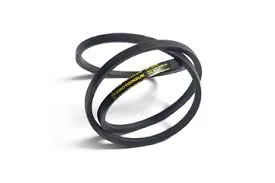- Arabic
- French
- Russian
- Spanish
- Portuguese
- Turkish
- Armenian
- English
- Albanian
- Amharic
- Azerbaijani
- Basque
- Belarusian
- Bengali
- Bosnian
- Bulgarian
- Catalan
- Cebuano
- Corsican
- Croatian
- Czech
- Danish
- Dutch
- Afrikaans
- Esperanto
- Estonian
- Finnish
- Frisian
- Galician
- Georgian
- German
- Greek
- Gujarati
- Haitian Creole
- hausa
- hawaiian
- Hebrew
- Hindi
- Miao
- Hungarian
- Icelandic
- igbo
- Indonesian
- irish
- Italian
- Japanese
- Javanese
- Kannada
- kazakh
- Khmer
- Rwandese
- Korean
- Kurdish
- Kyrgyz
- Lao
- Latin
- Latvian
- Lithuanian
- Luxembourgish
- Macedonian
- Malgashi
- Malay
- Malayalam
- Maltese
- Maori
- Marathi
- Mongolian
- Myanmar
- Nepali
- Norwegian
- Norwegian
- Occitan
- Pashto
- Persian
- Polish
- Punjabi
- Romanian
- Samoan
- Scottish Gaelic
- Serbian
- Sesotho
- Shona
- Sindhi
- Sinhala
- Slovak
- Slovenian
- Somali
- Sundanese
- Swahili
- Swedish
- Tagalog
- Tajik
- Tamil
- Tatar
- Telugu
- Thai
- Turkmen
- Ukrainian
- Urdu
- Uighur
- Uzbek
- Vietnamese
- Welsh
- Bantu
- Yiddish
- Yoruba
- Zulu
Aug . 13, 2024 22:06 Back to list
Understanding the Functionality and Importance of Tensioner Belt Pulleys in Automotive Systems
Understanding the Tensioner Belt Pulley Importance and Functionality
The tensioner belt pulley is a crucial component in the automotive industry, specifically relating to the operation of the engine’s serpentine belt system. This seemingly simple component plays a significant role in ensuring the proper functioning of various peripheral components, including alternators, power steering pumps, and air conditioning compressors.Understanding the design, operation, and importance of the tensioner belt pulley is essential for mechanics and car owners alike.
Functionality of the Tensioner Belt Pulley
At its core, the tensioner belt pulley serves two primary functions maintaining the correct tension of the serpentine belt and facilitating the smooth operation of various engine accessories. The serpentine belt is designed to drive multiple devices from a single belt, which promotes a more efficient design compared to older systems with multiple belts. The tensioner pulley ensures that the belt remains tight enough to prevent slippage, which can lead to belt wear, decreased performance, and potential engine damage.
The tensioner itself is typically spring-loaded, allowing it to adjust dynamically as the belt stretches or shifts during operation. This self-adjusting feature is critical, as it accommodates the changes in tension caused by heated components, variations in load, and natural wear over time. If the tensioner pulley fails to maintain the belt tension, it can lead to improper functioning of associated components, resulting in issues such as battery drainage or overheating.
Signs of a Failing Tensioner Belt Pulley
Recognizing the signs of a failing tensioner belt pulley is vital for proactive vehicle maintenance
. Some common indicators include1. Belt Slippage If you notice squeaking or squealing noises, especially when starting your engine, it could indicate belt slippage due to insufficient tension.
tensioner belt pulley

2. Cracks or Wear on the Belt A worn or fraying serpentine belt may be a result of an ineffective tensioner, necessitating inspection or replacement.
3. Engine Overheating If the belt that operates the water pump fails to maintain tension, it could lead to engine overheating.
4. Warning Lights The dashboard warning lights for engine problems can illuminate due to issues stemming from the serpentine belt system and tensioner malfunction.
Maintenance and Replacement
Routine inspections of the serpentine belt system, including the tensioner belt pulley, are vital for vehicle longevity. Most manufacturers recommend checking these components during regular service intervals. If any signs of wear or malfunction are present, timely replacement can prevent more significant issues.
When replacing the tensioner belt pulley, it is critical to also inspect the serpentine belt and other related components. Replacing the tensioner alone may not solve all problems if the serpentine belt is also worn. A complete overhaul often leads to better results and increased reliability.
Conclusion
In summary, the tensioner belt pulley is an integral component that contributes to the smooth and efficient operation of a vehicle's engine accessories. By maintaining proper belt tension, it ensures that everything from the alternator to the power steering system functions optimally. Awareness of potential failure signs and regular maintenance can help car owners avoid costly repairs and extend the life of their vehicle. As technology evolves, understanding the mechanical intricacies of components like the tensioner belt pulley remains essential for anyone involved in automotive care.
-
Korean Auto Parts Timing Belt 24312-37500 For Hyundai/Kia
NewsMar.07,2025
-
7PK2300 90916-T2024 RIBBED BELT POLY V BELT PK BELT
NewsMar.07,2025
-
Chinese Auto Belt Factory 310-2M-22 For BMW/Mercedes-Benz
NewsMar.07,2025
-
Chinese Auto Belt Factory 310-2M-22 For BMW/Mercedes-Benz
NewsMar.07,2025
-
90916-02660 PK Belt 6PK1680 For Toyota
NewsMar.07,2025
-
drive belt serpentine belt
NewsMar.07,2025

